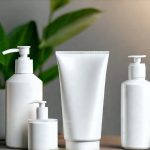Bladder irritation is an incredibly frustrating experience, leading to symptoms like frequent urination, urgency, burning sensations, and even discomfort in the pelvic area. While many factors can contribute to these issues – ranging from infections and underlying medical conditions to dietary choices – a surprising culprit often overlooked is personal hygiene products. The soaps and washes we use daily, seemingly innocuous parts of our routine, can sometimes play a significant role in triggering or exacerbating bladder problems for susceptible individuals. This article will delve into the connection between certain cleansing agents and bladder irritation, exploring why this occurs, which ingredients are most likely to cause issues, and what steps you can take to mitigate these effects if you suspect your personal care products are contributing to your discomfort.
The skin around the genital area is particularly sensitive and delicate, making it more vulnerable to irritants than other parts of the body. Unlike many areas, this region has a unique microbiome – a complex ecosystem of bacteria that maintains its health. Harsh chemicals found in some soaps can disrupt this balance, leading to inflammation and increased susceptibility to irritation. Furthermore, because the perineal area is close to the urethra and bladder, substances absorbed through the skin or coming into direct contact during washing can easily travel upwards and potentially irritate the urinary tract. It’s important to remember that everyone’s sensitivity levels differ, meaning what causes a reaction in one person may not affect another.
The Role of Ingredients: What’s Lurking in Your Wash?
Many seemingly standard soaps and body washes contain ingredients that can be problematic for those prone to bladder irritation. Fragrances, both synthetic and natural, are often the biggest offenders. These complex mixtures contain dozens – even hundreds – of different chemicals, some of which can be potent irritants. Even products labeled “fragrance-free” might contain masking agents that simply cover up scents rather than eliminating them entirely. Beyond fragrance, certain sulfates, like Sodium Lauryl Sulfate (SLS) and Sodium Laureth Sulfate (SLES), are known for their strong cleansing properties but can also be very stripping to the skin, disrupting its natural barrier and leaving it more vulnerable. Preservatives like parabens and formaldehyde-releasing preservatives, while used to extend shelf life, have also been linked to sensitivities and allergic reactions in some individuals.
The problem isn’t necessarily that these ingredients are inherently “bad,” but rather their potential to cause irritation when they come into contact with sensitive skin near the bladder. The concentration of these chemicals matters too – a higher concentration increases the risk of reaction. It’s also important to consider that repeated exposure over time can build up sensitivity, meaning someone who initially tolerates a product might eventually develop a reaction after prolonged use. Choosing products with minimal ingredients and avoiding harsh chemicals is generally the best approach for those concerned about bladder irritation.
Finally, pH balance plays a critical role. The vagina naturally has an acidic pH (around 3.8-4.5), which helps protect against harmful bacteria. Using soaps that are too alkaline can disrupt this delicate balance, making it easier for irritants to cause problems. This is why many gynecologists recommend using specifically formulated feminine washes with a pH-balanced formula, or simply opting for gentle, unscented cleansers designed for sensitive skin.
Identifying Your Triggers: A Process of Elimination
Pinpointing the exact source of bladder irritation can be challenging, as multiple factors might contribute to your symptoms. However, a systematic approach can help you identify potential triggers and adjust your hygiene routine accordingly.
- Start with a simple elimination diet: Temporarily switch to a very basic cleansing routine using only plain water or a pH-balanced cleanser specifically designed for sensitive skin. Observe if your symptoms improve.
- Introduce products one at a time: If the initial change helps, slowly reintroduce other hygiene products – such as different soaps, washes, or lotions – one at a time, giving yourself several days to observe any reactions before adding another product.
- Keep a symptom diary: Document when your symptoms flare up and what products you were using around that time. This can help reveal patterns and identify potential culprits. Be specific about the brand name, scent (if any), and ingredients list of each product.
This process requires patience and careful observation, but it’s often the most effective way to determine which products are contributing to your bladder irritation. Remember to consult with a healthcare professional if you’re struggling to identify triggers or if your symptoms persist despite making changes to your hygiene routine. They can help rule out other underlying medical conditions and provide personalized recommendations.
The Power of Gentle Cleansing: Alternatives & Best Practices
Once you’ve identified potential irritants, the next step is to find suitable alternatives that minimize the risk of bladder irritation. Prioritizing gentle cleansing practices is key. Look for products specifically formulated for sensitive skin or those labeled “hypoallergenic” and “fragrance-free.” Avoid anything with harsh sulfates, parabens, or formaldehyde-releasing preservatives. Consider using a mild cleanser designed for babies – these are often free of irritating ingredients and gentler on the skin.
When washing, use lukewarm water instead of hot water, as hot water can further exacerbate irritation. Avoid douching entirely, as it disrupts the natural vaginal flora and increases the risk of infection. After cleansing, pat the area dry gently with a soft towel rather than rubbing vigorously. And finally, opt for cotton underwear, which is more breathable than synthetic fabrics and allows better airflow, reducing moisture buildup that can contribute to irritation.
Beyond Soap: Other Potential Irritants & Considerations
It’s important to remember that soap isn’t the only potential source of bladder irritation in your hygiene routine. Laundry detergents used to wash underwear can also contain irritating chemicals that linger on fabrics and come into contact with sensitive skin. The same applies to fabric softeners, which often contain fragrances and other additives. Consider switching to fragrance-free, dye-free laundry detergents designed for sensitive skin.
Furthermore, even seemingly harmless products like moisturizers and feminine hygiene sprays can sometimes contain irritating ingredients. Read labels carefully and choose options specifically formulated for sensitive skin. Finally, remember that personal care isn’t the only factor; dietary choices, stress levels, and underlying medical conditions can all contribute to bladder irritation. A holistic approach that addresses these factors is often most effective in managing symptoms and improving overall well-being. If you are concerned about persistent or severe bladder irritation, it’s always best to consult with a healthcare professional for proper diagnosis and treatment.





















